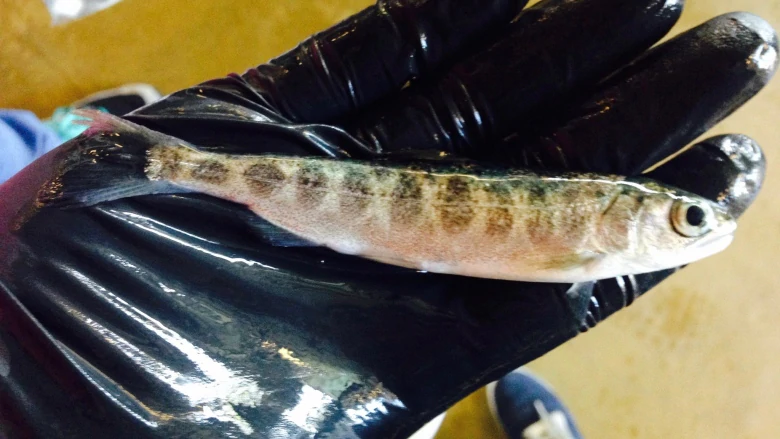Antidepressants can make smolts 'bold,' less afraid of predators, says Seattle toxicologist
A Seattle expert in environmental contaminants who has linked sewage flushes into Washington state estuaries to higher juvenile chinook salmon death rates suspects human drugs found in fish put them at risk.
James Meador of the National Oceanic and Atmospheric administration (NOAA) said he believes pharmaceuticals found in the contaminated water — such as amphetamines and antidepressants — are in part to blame.
These drugs and chemicals pass through human digestive systems — and some are flushed directly down the toilet.
Meador tested fish from sewage-contaminated estuaries in Puget Sound on the northwestern coast of Washington.
"The fact that we detected these powerful medicines in fish is surprising," he said.
Studied fish for 40 years
He tested 49 fish for 150 pharmaceuticals, personal care products and industrial chemicals.
He found 42 chemicals at elevated levels in fish — and 81 of the chemicals in effluent.
Meador has studied the effects of contaminants on fish for 40 years and believes the effluent harms chinook during a critical period in their development.
"We suspect [the chemicals] affect their physiology and behavior, which could cause them to grow slower and act oddly. Those factors mean they are more likely to get eaten by a predator," he said.
The 2018 study looked at 241 fish from three contaminated Puget Sound estuaries — bodies of water where rivers meet the sea — on the west coast of Washington state.
These include the Sinclair Inlet, the Puyallup River and the less contaminated Nisqually River.
He found drugs like antidepressants in fish tissue, and even more drugs in the water.
Chinook yearlings often grow in estuaries near shores, where contaminants that are rife in human sewage can concentrate.
In a 2016 study, Meador analyzed 37 years of data, which revealed that chinook developing in contaminated water had a 45 per cent lower survival rate than salmon in clean water.
In his 2018 study he tried to examine why this happens.
But Meador never expected to find so many contaminants found in human sewage in the fish when he started testing water near pipes that pour into estuaries.
Water near those pipes had 10 times the chemical cocktail of water downstream.
Samples revealed everything from cocaine to amphetamines and nicotine byproducts. He said drugs that pass through humans, such as diabetes treatments and antidepressants, affect fish metabolism and behaviour.
"[Antidepressants] can make these fish a little more bold so they really don't care as much about predators," he said.
He said the amounts found in fish though "significant" would not affect humans or predators.
What's in B.C. water?
Along B.C.'s salmon-rich Fraser River, there are three waste water plants.
Last year, Richmond's Iona Island wastewater treatment plant discharged about 574-million litres per day of "under-treated" water, according to federal officials.
The primary treatment plant is slated for upgrade by 2030. Primary treatment of sewage mechanically strains the water of solids, but not chemicals.
Secondary treatment removes most contaminants of concern, according to Meador.
In 2017, the 450-billion litres of waste water pumped through Metro Vancouver plants were tested for many of the same chemicals that Meador studies.
Fraser River water quality "mostly met" guidelines, according regional reports.
However, a federal Environment official said contaminants sometimes are detected in the the Fraser River.
"Periodically, some chronic toxicity of effluent... was observed," said Marilyne Lavoie, a spokesperson for Environment and Climate Change Canada in an email.
She noted that the source of that toxicity needs more study.

